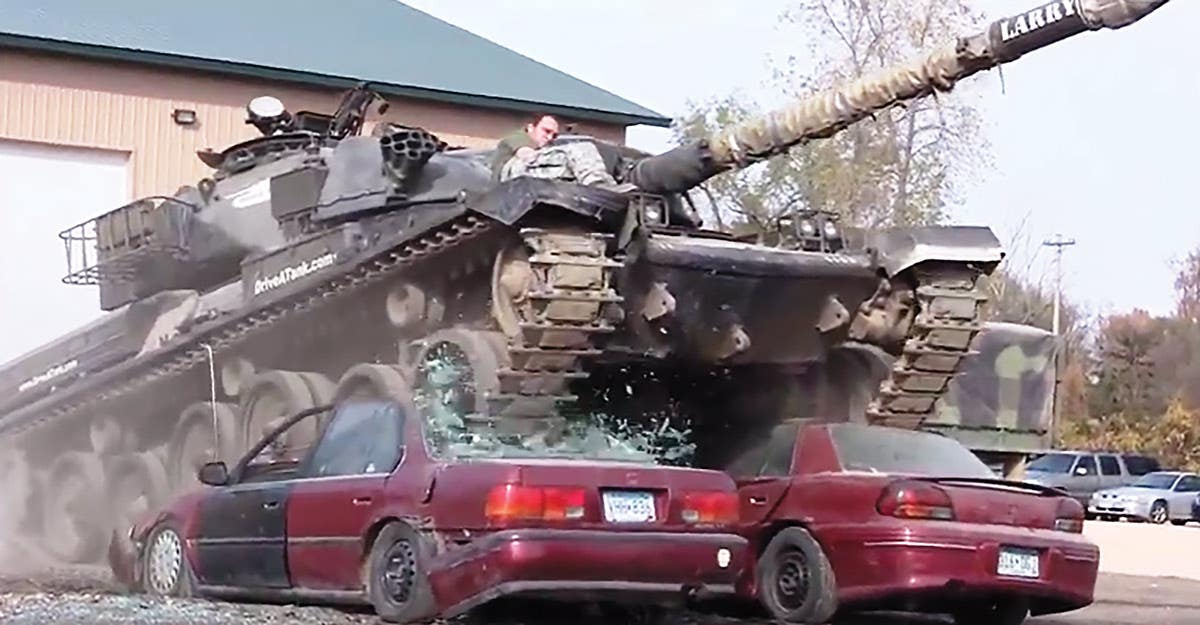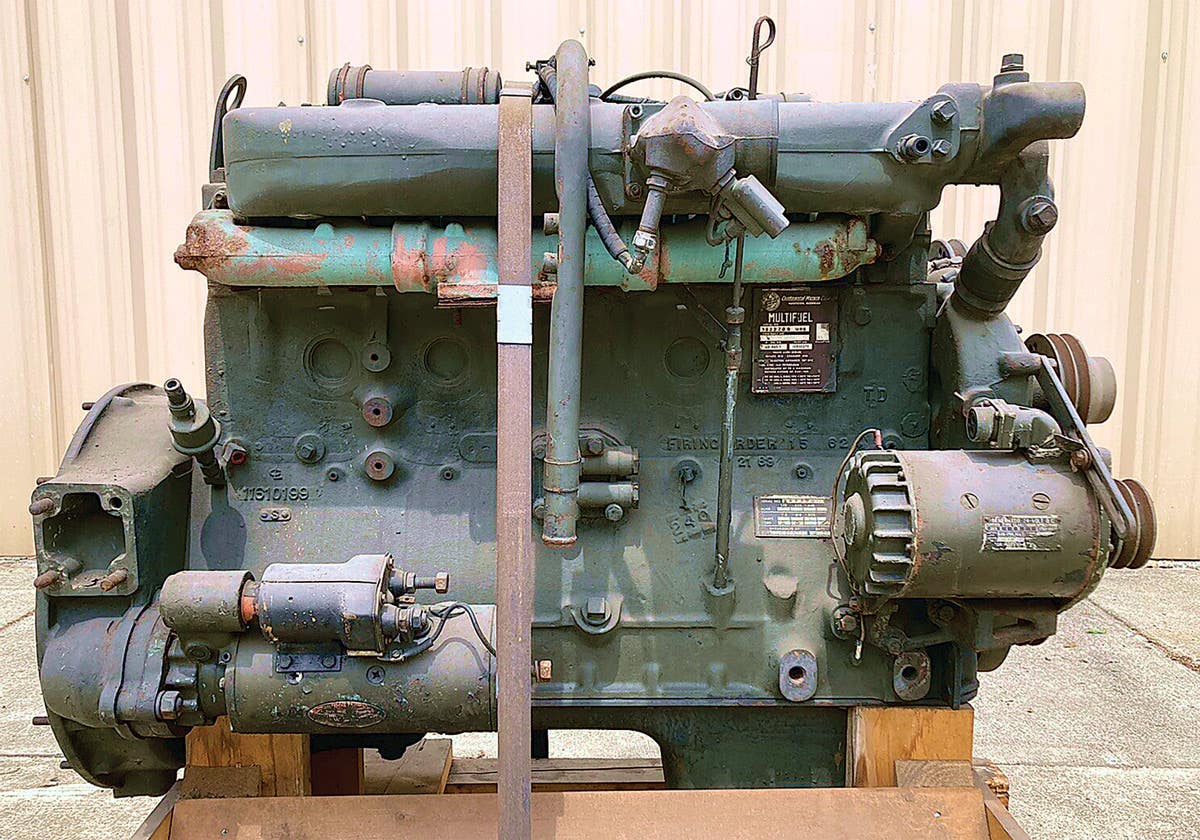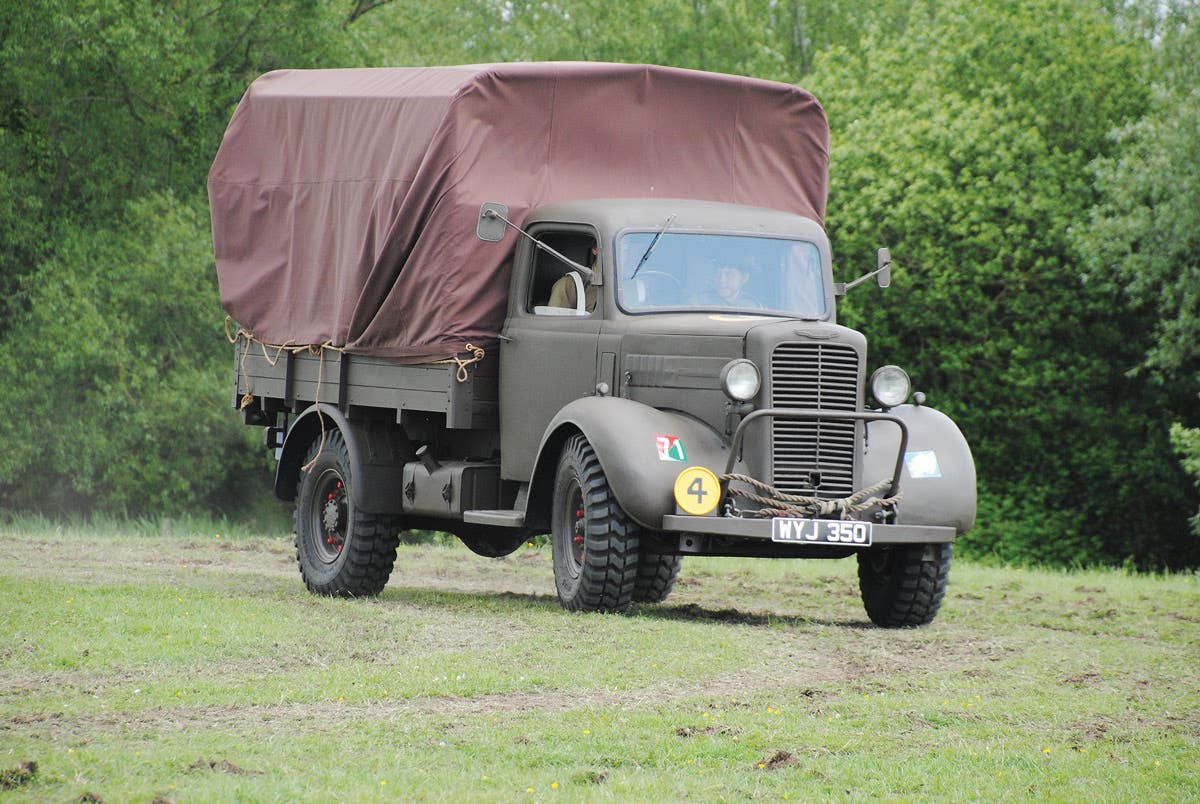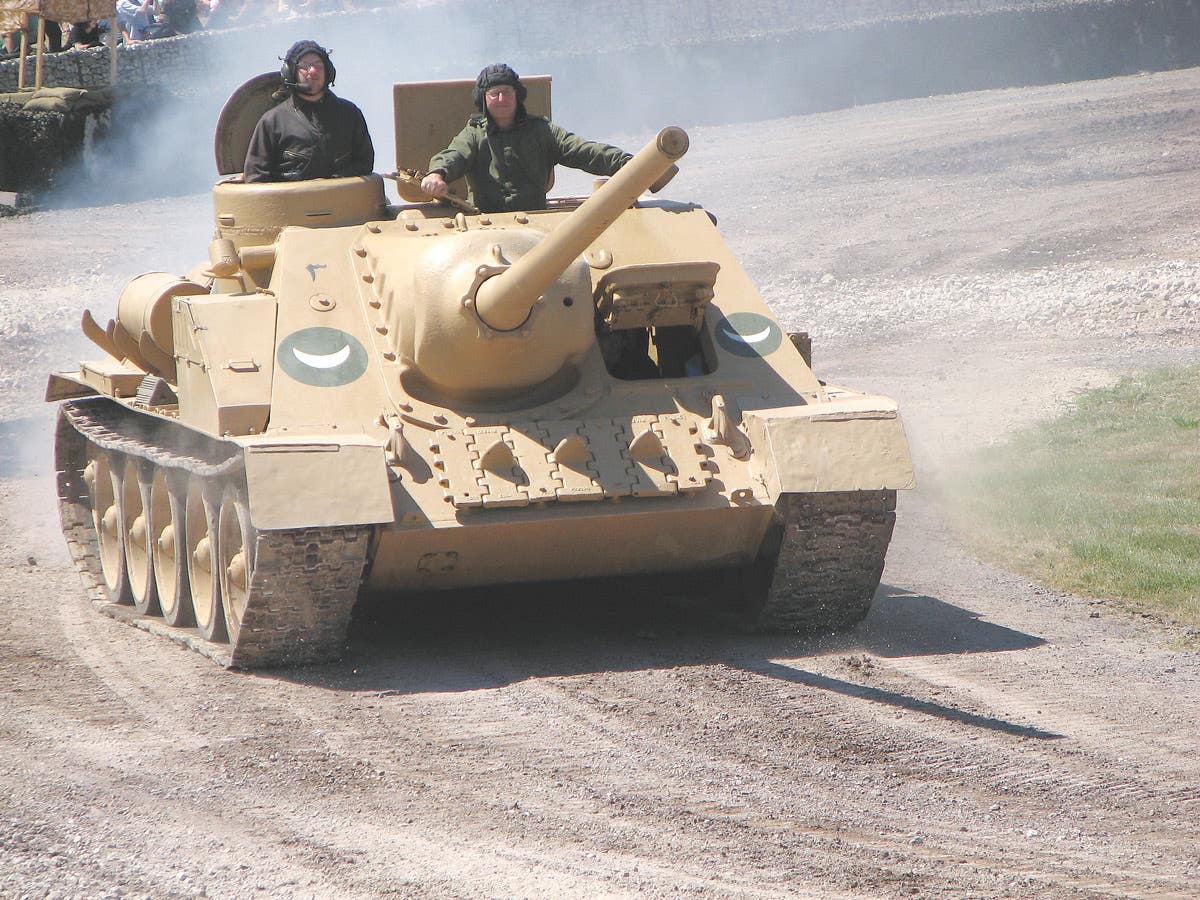DUKWs on D-Day
Amphibious vehicles tend to capture the imagination, and there has never been a military amphibian as useful and versatile as the GMC DUKW. This seems ironic because, even though General…
Amphibious vehicles tend to capture the imagination, and there has never been a military amphibian as useful and versatile as the GMC DUKW. This seems ironic because, even though General Dwight D. Eisenhower praised the DUKW shortly after the Allied Forces’ successful D-Day invasion as “one of the most valuable pieces of equipment produced by the United States during the war,” the U.S. military had initially rejected it.
For those not familiar with these remarkable vehicles, here’s a bit of back-story:
After World War I, it became apparent to the U.S. military that some sort amphibious vehicle was needed to land troops and equipment from ships onto beaches and keep the landed forces supplied. Although there were various small landing craft in use, there was still the challenge of how to land soldiers and supplies over sandbars and reefs in waters too shallow for vessels to float yet too deep for vehicles to drive through. However, peacetime put these concerns on the back burner — until Hitler’s Blitzkrieg conquered much of Western Europe in a frighteningly short time, and Germany had established formidable coastal defenses along the Atlantic shoreline. Then the Japanese attack on Pearl Harbor forced the U.S. into the war; and the need for a viable amphibious vehicle became a necessity. Moreover, a vehicle that could be built cheaply and quickly in large numbers, and be fairly simple to operate, repair and maintain.
Although the Office of Scientific Research and Development (OSRD) began to explore amphibious engineering and numerous experts were involved, the short-form is a marine designer, Rod Stephens Jr., was engaged to transform a GMC 2 1/2-ton truck into an amphibious cargo vehicle. Stevens went right to work and in less than 40 days designed and built what was basically a sheet metal box to enclose the chassis of GMC CCKW truck (the very first prototype was based on a GMC AFKW chassis) so it could float, along with the necessary mechanical components to make it self-propelled in the water; essentially a propeller and rudder. Hence a DUKW was hatched.
DUKW is not a military acronym; rather the factory designation used by GMC:
“D” indicated a vehicle designed in 1942.
“U” stood for utility.
“K” indicated powered front wheels.
“W” indicated two powered rear axles.
However, the project drew continuous criticism from military skeptics and came very close to being canceled. It seemed that although Stevens gave the military exactly what it had asked for (and, as was later proven, much more) the military brass was not impressed with the prototype, and after giving it a cursory glance, and without any testing or sea mtrials, decided it was a bad idea.
Stevens, however, had faith in his vehicle. Though the military refused to give it a chance, he built a few more and did his own testing. It was during this time that a storm hit the coast of Providence Town, Mass., and a Coast Guard vessel with seven crew members ran aground. Also at the time, one of Stevens’ new DUKWs was on promotional display nearby. It was pressed into service and was not only able to rescue the stranded seamen, but also put on an impressive show of its abilities in the heavy storm surf. Of course the news media covered the story, which went nationwide, and the DUKW soon had support from President Roosevelt on down the chain of command. Full production was approved, contracts were signed, and DUKWs began rolling off assembly lines at the Yellow Truck and Coach Co. in Pontiac, Mich. and GM’s plant in St. Louis, Mo.
There were many improvements and modifications as field testing and sea trials continued, such as the design of the windshield (early designs were often broken in heavy surf) as well various updates to components and the engine cooling system, though DUKWs had yet to face serious combat. Then, in July of 1943, a shipment of DUKWs was sent to the Mediterranean because the Allies needed a way into Italy, and that would begin with Sicily. An amphibious assault was required, and around 1,000 DUKWs were deployed. It quickly became apparent that their seaworthiness as well as their agility ashore had never been fully tested or appreciated, and the vehicles performed beyond all expectations. DUKWs efficiently carried supplies, munitions and men to the beaches, across the sands, and overland through the hills, and the streets of Sicilian villages. Many of the landing ships and even the smaller landing craft couldn’t get through the shallow waters around the island, but DUKWs could, and they kept the invasion supply line flowing. British General Sir Harold Alexander said, “It is not too much to say that the DUKW revolutionized the problem of beach maintenance.”
One could also say that this was the DUKW’s first real trial by fire and water, and it passed with full honors, which more than qualified it to be deployed in the largest invasion force ever assembled: the D-Day landings.
Around 2,000 DUKWs were utilized in this massive operation with 19 DUKW companies allocated. Twelve companies were assigned to Omaha Beach, and seven to Utah Beach. All were loaded with ammunition and other types of re-supply cargo vital during the early stages of the invasion. The 453rd, 458th and 459th Transportation Corps Amphibious Truck Companies were assigned to the initial assault. Their mission was to deliver their cargo, then shuttle between the beach and the ships, off-loading supplies and establishing supply and ammunition dumps. In addition, they and their crews performed a multitude of other essential duties, often bridging the gap between the troops on the beach and the ships offshore. Some were designated to aid the wounded and evacuate them from the beaches. Many others continually brought in ammunition, supplies, food and fuel. As the beaches were secured and the troops moved inland, DUKWs continued to supply them. This eliminated the delay and vulnerability of having to unload cargo from landing craft and reload it onto conventional trucks. It was estimated that nearly 40 percent of all supplies that came ashore from June 6, 1944 to mid-July, 1944 were carried by DUKWs. Of course there were loses: From June 6 to 7, 1944, the companies lost 41 DUKWs while delivering supplies from ships to beaches or to supply dumps established behind the front lines. Besides loses from enemy fire, there were also inevitable accidents as well as sinkings due to DUKWs being overloaded during the heat and rush of battle.
One unique use of DUKWs during the D-Day invasion was the Ranger assault on Pointe du Hoc, which is a promontory with a 100-foot cliff located about midway between Utah and Omaha Beaches. The Germans had fortified the cliff top as part of the Atlantic Wall with a battery built in 1943 with six captured WWI vintage GPF 155mm guns positioned in open concrete emplacements. In the spring of 1944, the Germans began to improve the battery by building mounts for flak anti-aircraft guns and added six enclosed concrete casements. In April 1944, the Allies bombed the location, after which the Germans removed the 155mm guns and relocated them further inland. During the Operation Overlord preparations, the Allies determined that Pointe du Hoc needed to be neutralized to prevent the Germans from using the position against the invasion forces.
The assault on Pointe du Hoc was to be made by the U.S. 2nd Ranger Battalion commanded by Lieutenant Colonel James Earl Rudder. The assault force was to be carried in 10 Landing Craft, Assault (LCA) with another two LCAs carrying supplies. Also accompanying were four DUKWs, which had 100-foot extension Merryweather fire truck ladders installed. Before the main invasion landings, the Rangers would assault the beaches at the foot of the cliffs, scale the cliffs using ropes, the ladders and grapples and neutralize the gun positions at the top of the cliff. Afterwards they would hold and defend the positions against any German counterattack until relieved. The Rangers trained for the cliff assault on the Isle of Wight under the supervision of British Commandos.
At 05:30 hours, a naval bombardment pounded the beach and the German positions on top of the cliff from the U.S. battleships Texas and Arkansas while the U.S. destroyers Satterlee and Talybont protected the assault craft. As dawn came, the Rangers’ LCAs advanced towards the beaches at Pointe Du Hoc, while Allied fighter-bombers struck the German positions on the cliff. The sea was rough; one of the LCAs sank while another was swamped, requiring all unnecessary equipment to be thrown overboard to stay afloat. When the remaining assault craft were about 300 yards from shore, the Germans opened fire with machine guns, mortars and flak. One of the four ladder DUKWs was hit and sunk. The LCAs reached the beach, dropped their ramps and the Rangers ran to the base of the cliffs, where they set up and fired grapnel-throwing mortars. Grappling hooks landed atop the cliffs after unwinding lengths of rope and the Rangers began to climb.
Unfortunately, the three remaining ladder DUKWs could not cross the shell-cratered beach to erect their ladders against the cliff. Colonel Rudder ordered the DUKW crews to raise and extend their ladders where they were, and Rangers climbed while under German fire. From the highest rungs, Rangers sprayed the top of the cliff with automatic rifle fire. While under this support from the DUKWs, Rangers climbed up the cliffs under German fire from above. Some Rangers fell when the Germans cut their ropes.
Nevertheless, the assault was successful; the Rangers neutralized the gun position and later repelled several counter-attacks from the German’s 914 Grenadier regiment. On the morning of June 8, the Rangers were relieved by the 2nd and 5th Rangers plus the 1st Battalion of the 116th Infantry supported by tanks from the 743rd Tank Battalion arriving from Omaha beach. Although the ladder-equipped DUKWs weren’t able to reach the base of the cliffs, they were able to provide much-needed covering fire.
Of course, these are but a few examples of the heroics of DUKWs and their crews on D-Day. Further testament to their usefulness is that between June 6, 1944 and May 8, 1945, DUKWs moved 5,050,000 of the 15,750,000 tons of cargo and supplies unloaded by the Allies in Europe during the war.
Not a bad service record for a vehicle the U.S. military first decided it didn’t want.
Want more amphibious vehicle coverage? Check out these articles.








